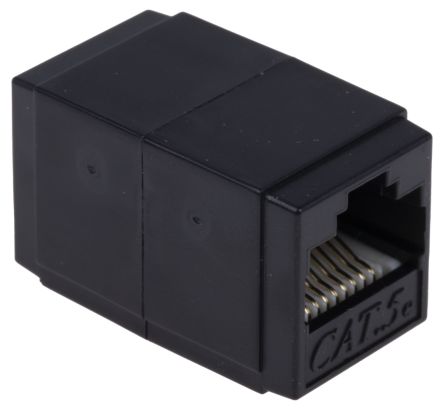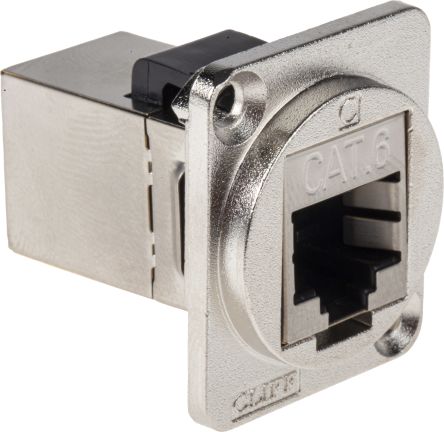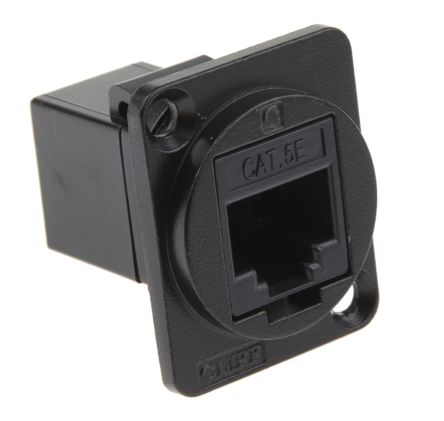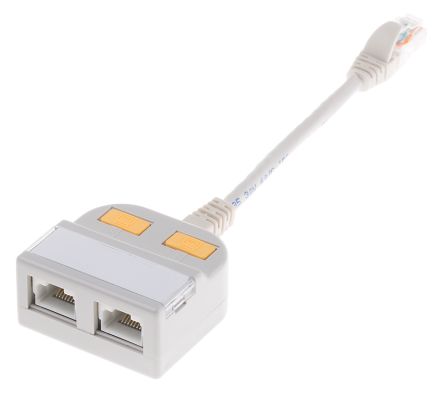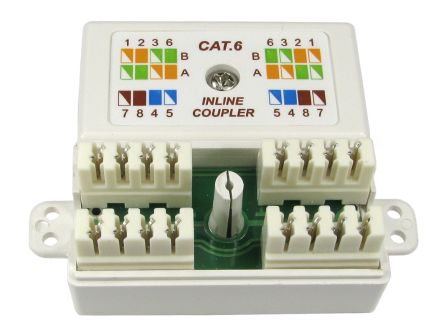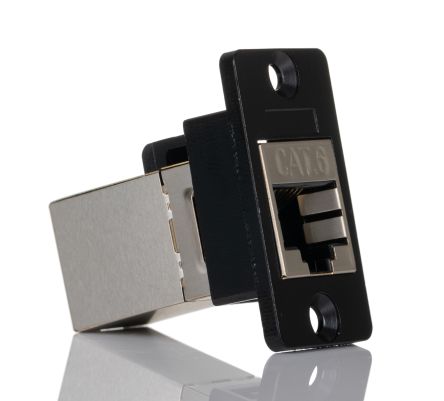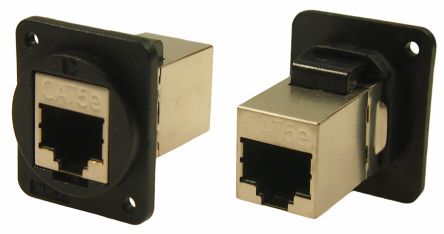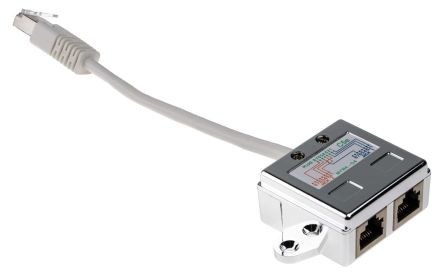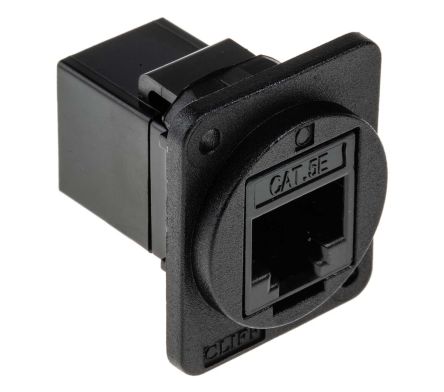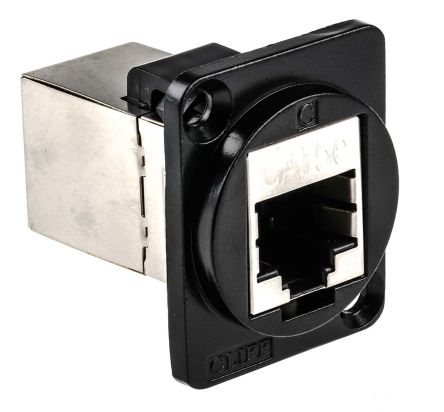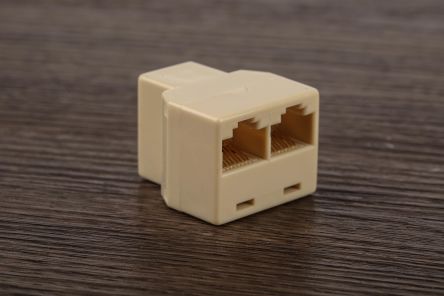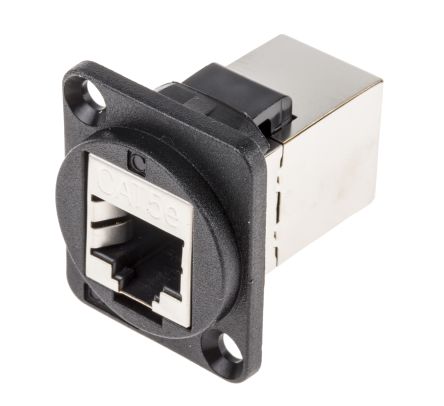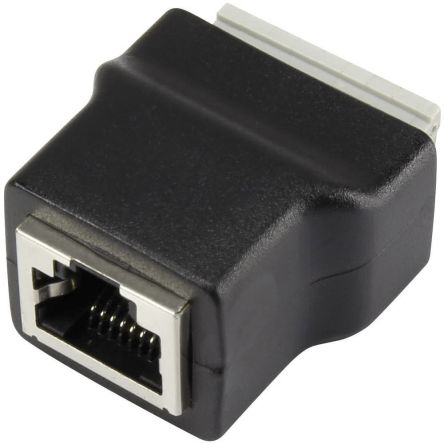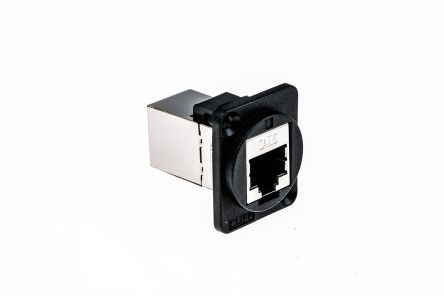- Automation & Control Gear
- Cables & Wires
- Enclosures & Server Racks
- Fuses & Circuit Breakers
- HVAC, Fans & Thermal Management
- Lighting
- Relays & Signal Conditioning
- Switches
- Batteries & Chargers
- Connectors
- Displays & Optoelectronics
- ESD Control, Cleanroom & PCB Prototyping
- Passive Components
- Power Supplies & Transformers
- Raspberry Pi, Arduino, ROCK, STEM Education & Development Tools
- Semiconductors
Ethernet Couplers
Ethernet couplers are essential networking components used to connect two ethernet cables, effectively extending the network connection. These couplers, often referred to as ethernet cable couplers, serve various purposes, from extending network cabling and splitting signals to connecting different network cable types.
Types of Ethernet Couplers
Ethernet couplers come in different forms, each designed for specific applications and cable types. One key difference is the number of ports, ranging from one to six, allowing for the connection of multiple cables simultaneously. They also vary in their wiring configuration, with options like RJ45 couplers, keystone couplers, and gender changers (adapters) available.
RJ45 couplers are the most common type, designed to connect two standard RJ45 cables. RJ45 inline couplers provide a compact solution for joining cables in a straight line, while keystone couplers are designed for wall-mounted installations. Gender changers, on the other hand, allow for the connection of male and female RJ45 connectors, providing flexibility in cable management.
Ethernet couplers can be found in both shielded and unshielded forms, and they typically feature a standardised snap-in system to ensure secure and reliable connections. These versatile couplers are compatible with a wide range of cable types, including Cat5, Cat5e, Cat6a, Cat7, and more. When selecting an ethernet coupler, it's crucial to check the compatibility of both connector A and connector B to ensure it matches your specific cable types and desired configuration.
How does an ethernet coupler work?
An Ethernet coupler, such as an RJ45 ethernet coupler, acts as a bridge between two Ethernet cables, enabling the flow of signals between them. Inline couplers typically have two female connection sockets that accommodate two male RJ45 connectors. The internal wiring of the coupler aligns the eight wires within each cable, creating a continuous electrical pathway for data transmission. Ethernet splitters, on the other hand, typically feature two or more female sockets on one side and a single male connector on the other. This configuration allows a single signal to be split across multiple connected cables.
RJ45 Ethernet Coupler
The RJ45 coupler, also known as an RJ45 inline coupler or RJ45 ethernet coupler, is a common networking tool used to connect two Ethernet cables with RJ45 connectors. This simple device allows you to effectively extend the length of your existing Ethernet cables, offering a convenient solution when your cables fall short.
RJ45 couplers work by aligning the internal wiring of the two connected cables, ensuring a continuous flow of data. This makes them ideal for various applications, such as:
- Extending cable reach: Connect two shorter cables to achieve a longer overall length.
- Bridging network segments: Connect two separate network segments to create a larger network.
- Creating a temporary network connection: Quickly and easily connect two devices without needing a dedicated cable.
RJ45 ethernet couplers are available in different categories (Cat5e, Cat6, etc.) to support various network speeds and bandwidth requirements. Choose a coupler that matches the category of your Ethernet cables to ensure optimal performance.
Compatibility with Network Standards
Ethernet couplers are designed to be compatible with a wide range of Ethernet cable categories, including Cat5, Cat5e, Cat6, and Cat6a. Using an Ethernet coupler that matches your cable category is essential to maintain optimal signal quality and avoid potential data loss.
Pros of using Ethernet couplers:
- Easy cable extension: Quickly and easily extend the length of Ethernet cables.
- Increased flexibility: Provide flexibility in network configuration and cable management.
- Cost-effective: A more affordable solution compared to replacing short cables.
Cons of using Ethernet couplers:
- Potential signal degradation: Excessive use of couplers or using couplers with lower category ratings than your cables can lead to signal degradation, especially over long distances.
- Increased connection points: Each coupler introduces another potential point of failure in your network.
Industry Applications
Ethernet couplers are versatile tools used across a wide range of industries and networking environments:
- Data Centers: In high-density data centers, Ethernet couplers provide flexibility in connecting servers, switches, and other networking equipment, optimizing cable management and facilitating high-speed data transmission.
- Telecommunications: Telecommunications infrastructure often relies on Ethernet couplers to extend cable runs and connect different network segments, ensuring seamless communication across long distances.
- Industrial Automation: Ethernet couplers play a crucial role in industrial automation, enabling communication between industrial control systems, sensors, and actuators, facilitating efficient process control.
- Building Automation: Modern buildings utilise Ethernet couplers to connect building management systems, security systems, and other building automation components, enabling efficient building operation and monitoring.
- Home and Office Networks: Ethernet couplers are commonly used in home and office networks to extend the reach of internet cable couplers and connect various devices, such as computers, printers, and gaming consoles, to the network.
Your Trusted Ethernet Coupler Supplier & Manufacturer
RS is your reliable source for high-quality Ethernet couplers in Australia. As a leading Ethernet coupler supplier, we offer a comprehensive selection of RJ45 couplers, keystone couplers, and other variants from reputable brands like CONEC, HARTING, Phoenix Contact, and more.
Whether you need an Ethernet to Ethernet coupler to join two standard cables or an Internet cable coupler to extend your home network, RS offers a wide selection to meet your needs. Our expert team is available to provide technical support and guidance, assisting you in finding the ideal Ethernet connectivity solutions for your needs. For more details on delivery services and fees, please refer to our Delivery Page.
Popular Searches
Related links
- RS PRO RJ45 Female Coupler UTP
- RS PRO RJ45 Coupler UTP
- RS PRO RJ45 Female Coupler STP
- RS PRO Single-Port RJ45 Female Cat5e, Unshielded
- RS PRO Female RJ45 Connector, Panel Mount Straight 1 Port
- Legrand Female RJ45 Connector Cat6, FTP Shield Straight 1 Port
- RS PRO Female RJ45 Connector Cat6 1 Port 8P8C -Way
- Weidmuller 2-Contact Female to Female Interface Module DIN Rail Mount, 1A
